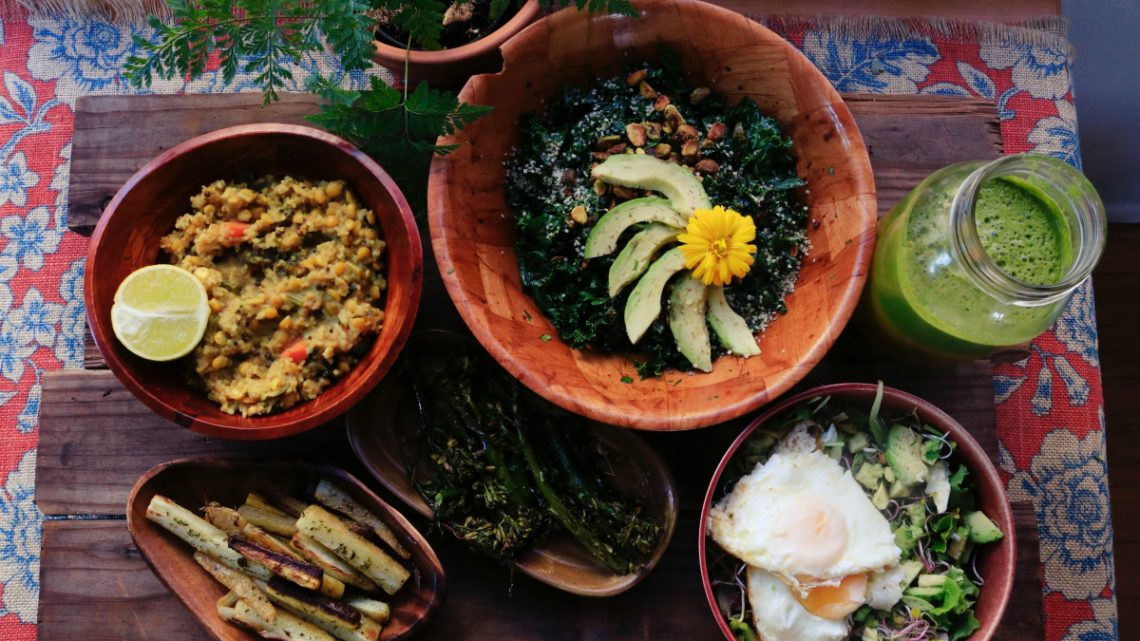Fad diets, contemporary workout approaches, rediscovered superfoods, there are health trends coming and going practically every day. We see our newsfeed filled with yet another health idea that’s been put forward, focused on helping us with weight management or becoming fitter. However, many of our modern ideas lack the substance and purpose needed to stand the test of time, and yet, there are ancient systems that are so balanced and wholesome that finally the health and fitness community is once more turning to them for help.
One of them is Ayurveda, a healing system focused on prevention as well as treatment coming from India, designed more so as a lifestyle and a holistic approach than a temporary solution. It can be quite a challenge to replace some of our ideas of healthy living with those based on Ayurveda, so to make the transition a bit easier, we have selected top five ways in which you can experience the benefits of this approach and slowly incorporate it into your life.
1. Include some daily meditation
For Ayurveda newbies, it’s important to know that this philosophy recognizes three “doshas” or personal energies, according to which you can determine not just your diet, but also the best meditation method as well as other details of your lifestyle.
- Kapha – Methodical, calm, and very stable, Kaphas are naturally slow, so they might need added inspiration to remain awake during meditation. In order to make meditation more meaningful for you, infuse it with mudras, or opt for meditating in motion, by walking, dancing, or running.
- Pitta – Passionate and powerful, Pittas love routine, efficiency, and thus like their meditation to require some extra effort. Use alternate nostril breathing and other techniques to make it more enthralling.
- Vata – If your mind is in constant motion, thinking up new ideas, then meditation might be a tough choice for you, requiring greater focus and streamlined thoughts. Using mantras can be of great help to create the desired effect, just make sure you steer clear of distractions.
All of this may sound slightly vague at first, but as you learn more about Ayurveda and its doshas, you’ll easily discover where you belong and which methods suit you best.
2. Eat whole foods
Even though your dosha will greatly determine your eating approach, including the best ways to improve digestion, regulate your body weight and balance your hormones, there are certain eating guidelines that apply to all three energy types. The golden rule of Ayurveda is to ensure diversity for your palate and include all six tastes in every meal – sweet, sour, salty, bitter, pungent, and astringent.
The same rule extends to the idea of using as many different fruits, veggies, nuts, seeds, meats, dairy, and grains in your diet, although cooked food is considered the best for easier digestion and bioavailability of nutrients, certain doshas do work well with raw ingredients, as well.
3. Spice up your palate
Another Ayurvedic rule of thumb that helps with balancing your dosha, making your meals more delicious, and adding a new layer of healthy ingredients is using a variety of spices. For example, using curcumin in your diet offers great anti-inflammatory benefits, boosts your digestion, and improves your immune system. You can add this earthy, aromatic spice into your meals, as it goes well with eggs, chicken, as well as quinoa and sautéed veggies. However, if you don’t find the taste all that appealing, using it in supplement form is equally beneficial for your overall well-being.
Infuse your winter teas and meals with fresh ginger, and you’ll elevate your energy levels, improve your natural resilience, and it’s a great addition to your weight-loss routine. Coriander, also known as cilantro, is a great ally for your liver, and its high antioxidant content promotes health in every way possible. Of course, the world of spices is an almost endless one, so make sure to expand your horizons as you start spicing up your diet!
4. Take a deep breath
Also an essential part of every yogi’s routine, Pranayama is a widely embraced practice according to Ayurveda for relieving stress, improving your metabolism, and overall detoxing. Breathing is a vital, natural activity we all enjoy, and yet, most of us take it for granted, and rarely practice breathing with greater awareness.
Ayurveda helps you use simple breathing techniques to help balance your dosha. From mastering the art of belly breathing, alternate nostril breathing, to explosive exhaling, you can keep your breathing exercises varied during the year, and depending on your health needs.
5. A new way of cleansing
Among many different ways you can help your body detox and cleanse on a regular basis, there are two methods you can include in your routine: oil pulling and tongue scraping. If you don’t have a tongue scraper yet, you can use a spoon to remove the buildup on your tongue. It will help you get rid of bad breath, make your taste-buds more taste-sensitive, and you’ll boost your health and immune system.
On the other hand, oil pulling is recommended with organic sesame or coconut oil, and a spoonful should be swished for 15 to 20 minutes, without swallowing any of it. The goal is to keep your teeth and your gums strong and healthy, and it can even help protect that pearly whiteness.
As Ayurveda is a holistic healing philosophy meant to give help you define your lifestyle, these five methods are only scratching the surface of the entire Ayurvedic system. By learning a few or all of these techniques, you may spark your own interest in this ancient approach, and then keep learning more to finally build a healthy lifestyle your mind, body, and spirit deserve!
If these tips help you enhance your health with Ayurveda, then please go ahead and share this article with your friends and family. After all, sharing is caring.
Author: Sophia Smith
Fashion, beauty and lifestyle blogger. Fashion addict and life lover, writes mostly in fashion and beauty related topics, mainly through blogs and articles. A regular contributor at High Style Life and Ripped.











